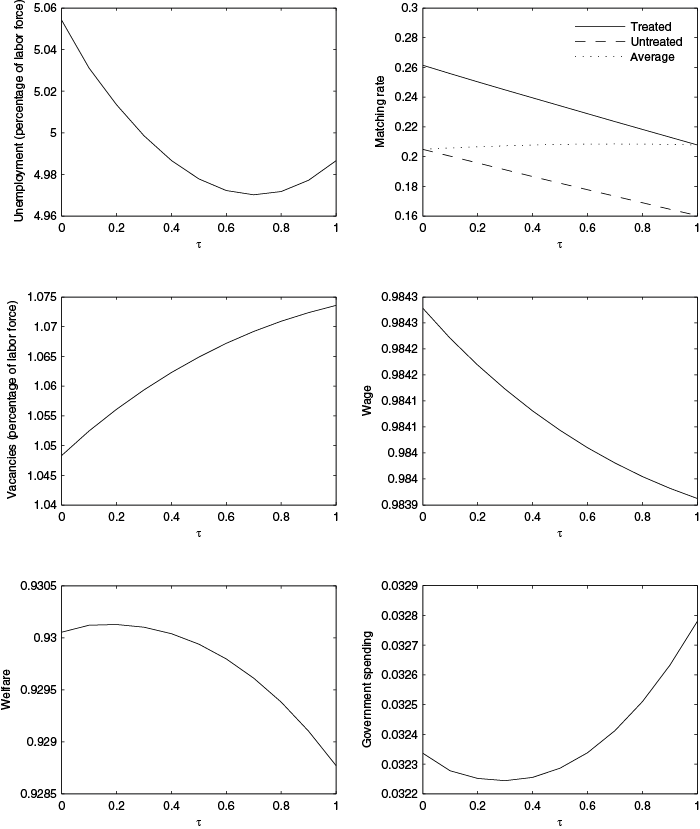The average unemployment rate in the EU increased to 11.2% in June 2012 compared with 10.0% a year earlier. This reopened the debate on the desirability of providing assistance to unemployed workers in their search for work. Many countries now offer mandatory job search assistance programmes to unemployment benefits recipients – but the question is, does this help?
In the past two decades, there have been a number of randomised experiments to evaluate such programmes. The effectiveness is found to differ between programmes and is often related to the intensity of the programme and target population (see Card et al. 2010). If a particular job search assistance programme does not stimulate participants in finding work faster, it is unlikely to affect the overall unemployment rate.
In new research, we study a Danish job search assistance programme which, according to a randomised experiment, leads to large positive effects on exit rates to work (see Graversen and Van Ours 2008). We show, however, that because of spillover effects, a large-scale implementation will only marginally reduce unemployment without increasing welfare (Gautier et al. 2012).
The experiment and spillovers
In two Danish counties (Storstrøm and South Jutland), half of the newly unemployed workers (those born on the 1st to the 15th day of the month) were given intensive guidance towards finding work during the period November 2005 until February 2006 (see Rosholm 2008 for a more detailed description). Towards the end of the experiment period, about one-third of the stock of unemployed job seekers were participating in this job search assistance programme. Comparing the outcomes of the participants and the nonparticipants shows that due to the programme the probability of finding work within three months after entering unemployment was ten percentage points higher for the programme participants.
The simple comparison of outcomes of participants and nonparticipants only gives a consistent estimate about the programme’s effectiveness in case of a large-scale roll out when there are no spillovers between participants and nonparticipants. This assumption is unlikely to hold in case of job search assistance programmes. Participants and nonparticipants are competing for the same jobs, so when participants increase their job search effort, nonparticipants may suffer from this. At the same time, if firms respond by opening more vacancies, nonparticipants benefit.
In order to empirically test for the presence of spillover effects, we compare the labour market outcomes of the nonparticipants in both experiment counties with the outcomes of newly unemployed workers in similar counties where there was no experiment. To control for possible differences between counties, we use data from the pre-experiment period and exploit a difference-in-difference design. The estimation results show that due to the experiment, nonparticipants in the experiment counties were almost three percentage points less likely to be employed three months after entering unemployment. We also find that during the period of the experiment, about 5% to 10% more vacancies were opened in the experiment counties than in other counties.
What happens if the programme is implemented at the macro level?
The empirical results suggest that considering both negative and positive spillover effects is important when evaluating the job search assistance programme. The Danish programme essentially increases the job search effort of participants by requiring them to make more job applications. The effect on vacancy supply is modest, so when participants send out more applications, this reduces the probability that a specific job application gets selected. We formalise this in an equilibrium search model with endogenous search effort. The structural parameters of the model are estimated using indirect inference such that the model predictions match the key results from the empirical analyses and some important moments in the data. This procedure provides a good fit for the model.
We use the estimated model for policy simulations. In particular, we consider a large-scale roll out of the programme such that all newly unemployed workers participate in the job search assistance programme. Our key variables of interest are the unemployment rate and welfare. As welfare measure we use output produced in the market plus the value of home production of unemployed workers, minus the pecuniary and non-pecuniary cost of participating in the programme and the job creation cost. We also consider the effect of the programme on the costs of the unemployment insurance programme (benefit payments and costs of the job search assistance programme).
The results are summarised in Figure 1. On the horizontal axis is τ, which is the fraction of newly unemployed workers assigned to the job search assistance programmes. So if τ equals 0, then none of the unemployed workers is participating in the programme while a large-scale roll out of the programme implies that τ is 1. The upper-left graph shows that the introduction of the programme first reduces the unemployment rate, but if more than 75% of the unemployed workers were to participate in the programme, the unemployment rate increases again. The reason is that at that point the negative spillover effects of making additional job applications start to dominate. The upper-right graph shows that unemployed workers participating in the programme always have higher exit rates to work than the nonparticipants, but that exit rates for both groups are decreasing in the fraction of unemployed workers participating in the programme. Therefore, the population average exit rate is only marginally increasing in the participation fraction.
Figure 1. Policy simulations
The middle-left graph shows that due to the additional job search effort induced by the programme, the number of jobs in the economy is increasing, but wages are lower. The latter is the consequence of workers disliking unemployment more when having to participate in the programme, which reduces their reservation wage. The bottom-left graph shows that welfare is highest when about 30% of the newly unemployed workers participate in the job search assistance programme. Finally, we see from the bottom-right graph that expenditures on the unemployment insurance programme are lowest when about 25% of the inflow into unemployment is assigned to the programme.
Conclusions
In the past two decades there has been more focus on evidence-based policy. Policymakers, therefore, have an increasing interest in evaluating the effectiveness of specific programmes. It is often argued that randomised experiments are the golden standard for such evaluations. However, it is well know that a randomised experiment only provides a policy-relevant treatment effect when there are no spillovers between individuals. In the study discussed above, we have shown that spillovers can be substantial. Despite the success of a small-scale implementation of the programme at the micro level, we find it to be ineffective at the macro level. The results of our study are no exception, Blundell et al. (2004) and Lise et al. (2004) also find that the results of a micro evaluation are reversed when taking spillover effects into account.
References
Blundell, R, M Costa Dias, C Meghir, and J Van Reenen (2004), “Evaulating the employment impact of a mandatory job search program", Journal of the European Economic Association,2:569-606.
Card , D, J Kluve, and A Weber (2010), “Active Labor Market Policy Evaluations: A Meta-Analysis”, Economic Journal, 120, F452-F477.
Gautier PA, P Muller, B van der Klauw, M Rosholm and M Svarer(2012), “Estimating equilibrium effects of job search assistance”, CEPR Discussion Paper No. 9066.
Graversen, BK, and JC van Ours (2008), “How to help unemployed find jobs quickly: Experimental evidence from a mandatory activation program”, Journal of Public Economics, 92(10-11):2020-2035. Lise, J, S Seitz, and JA Smith (2004), “Equilibrium policy experiments and the evaluation of social programs”, NBER Working Paper, 10283.
Rosholm , M (2008), “Experimental evidence on the nature of the Danish employment miracle”, IZA Discussion Paper, No. 3620.







